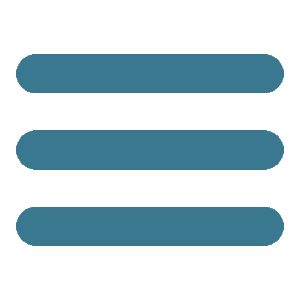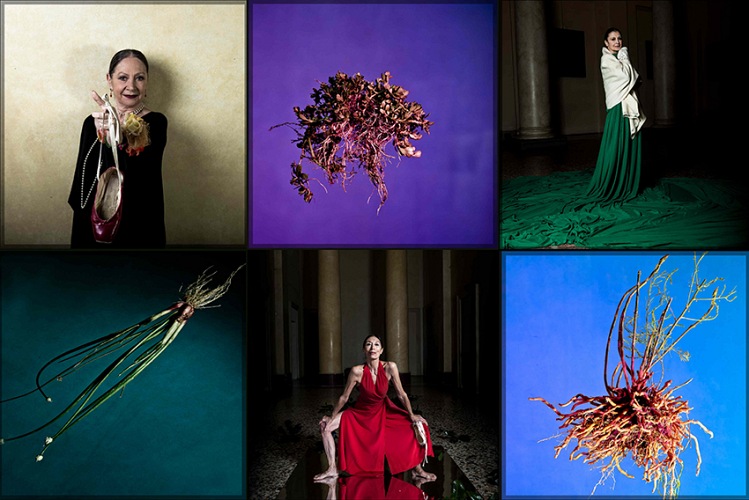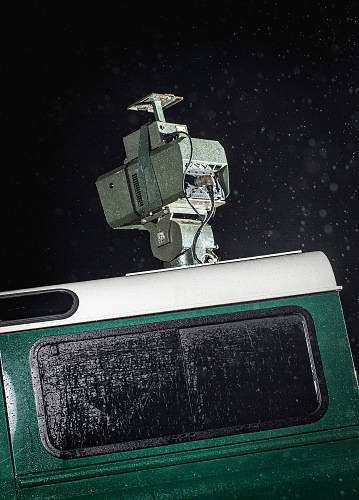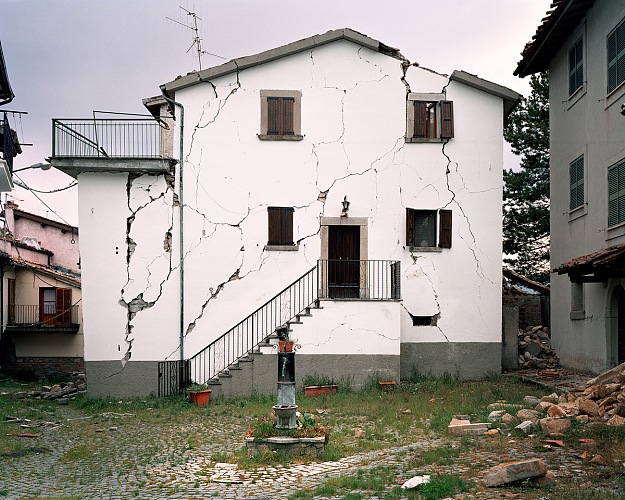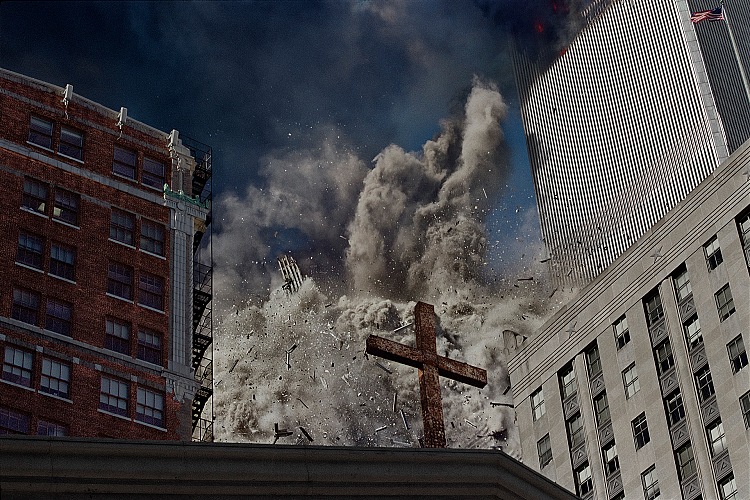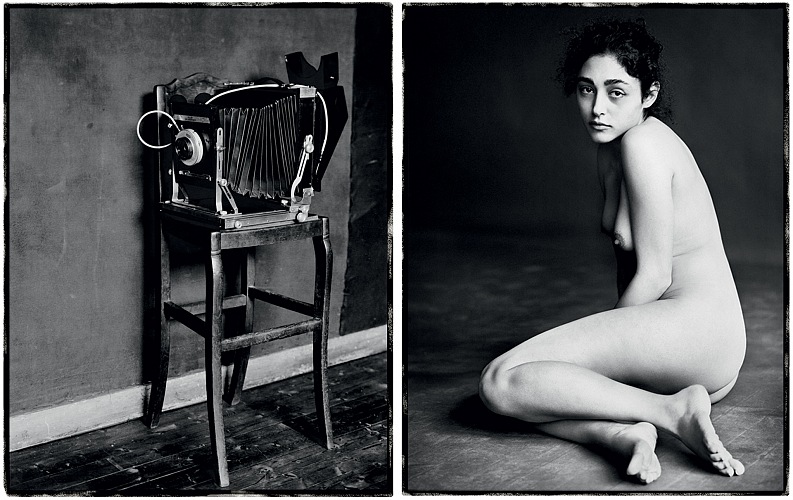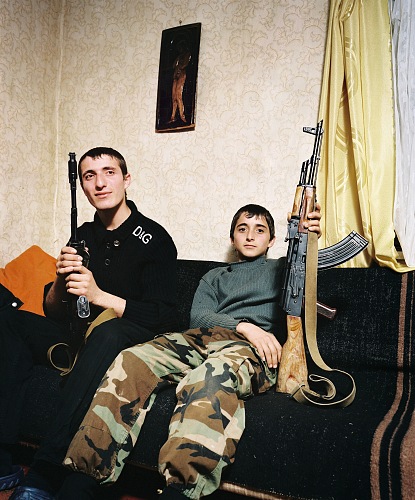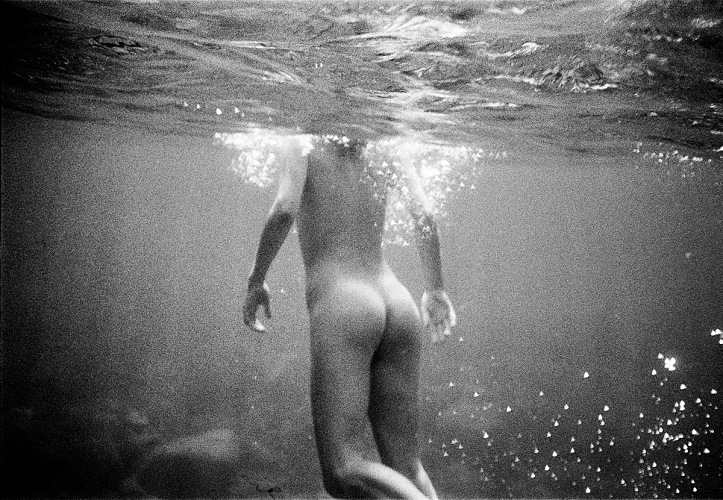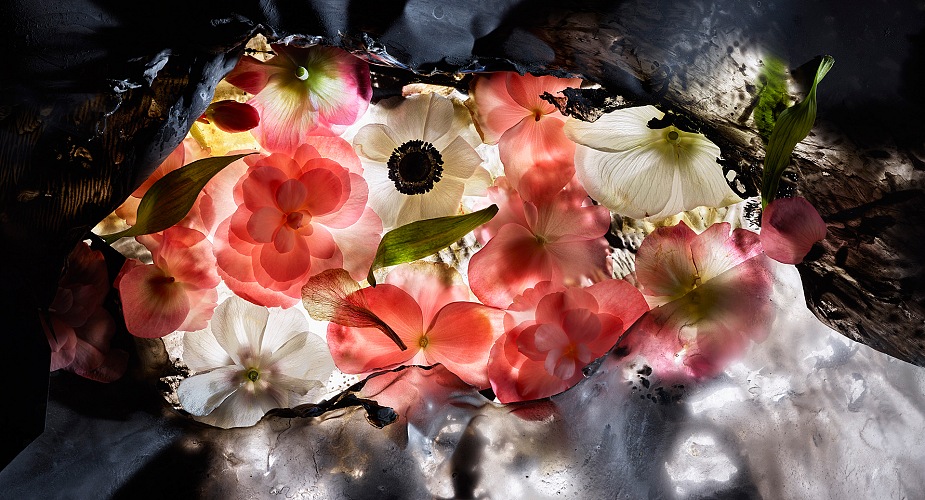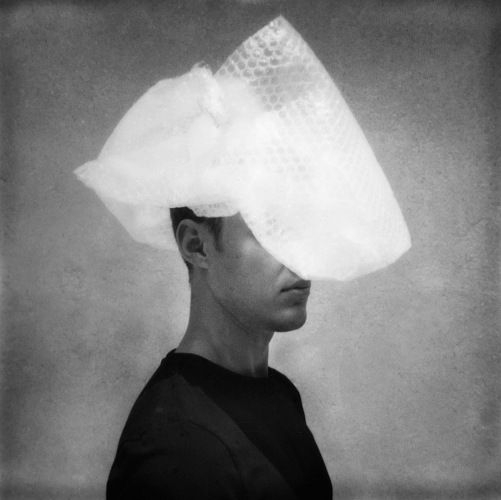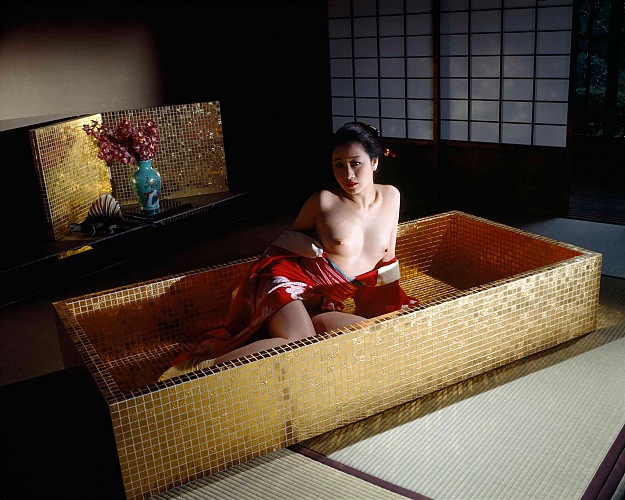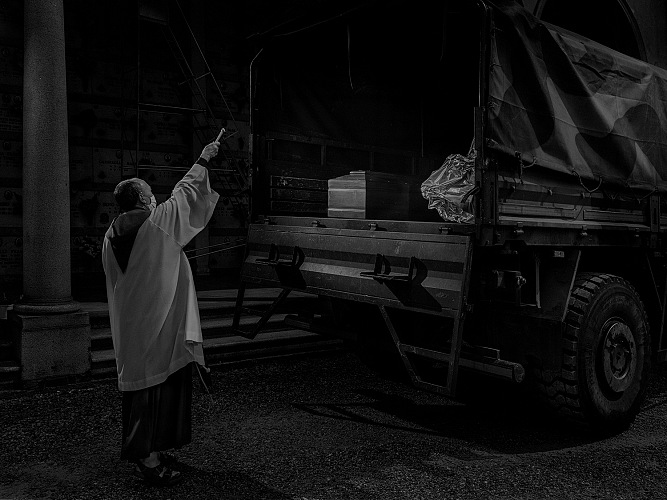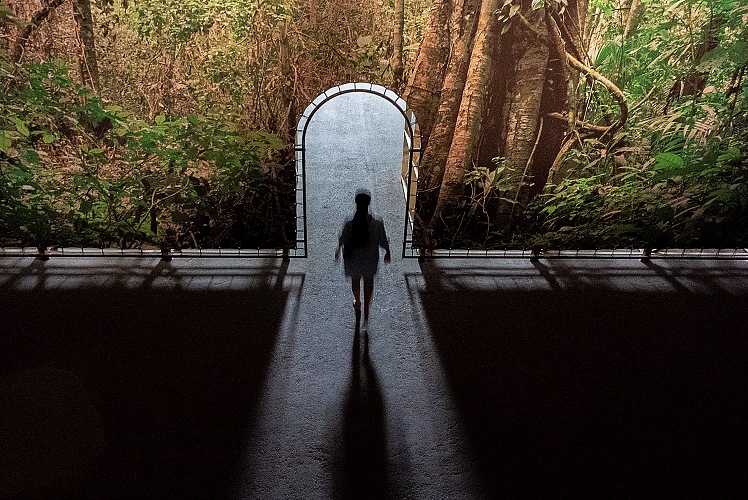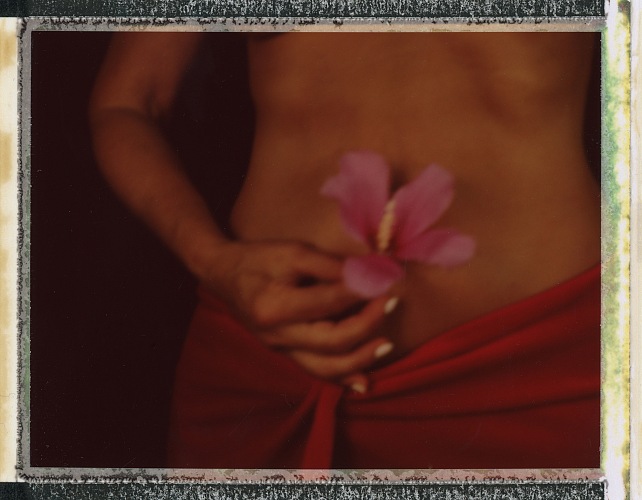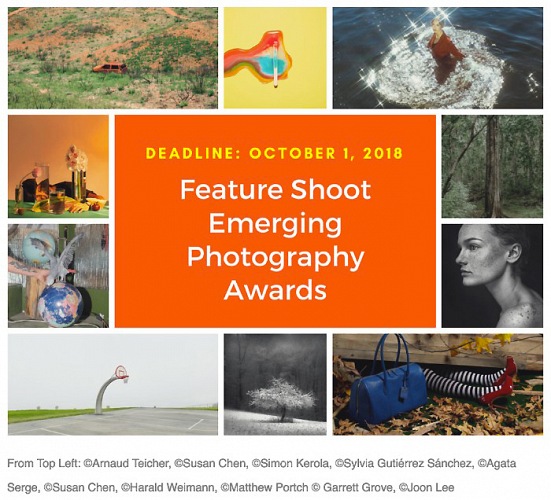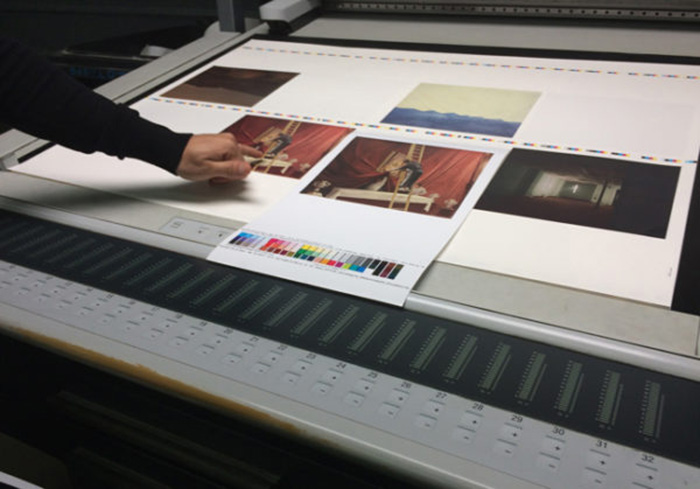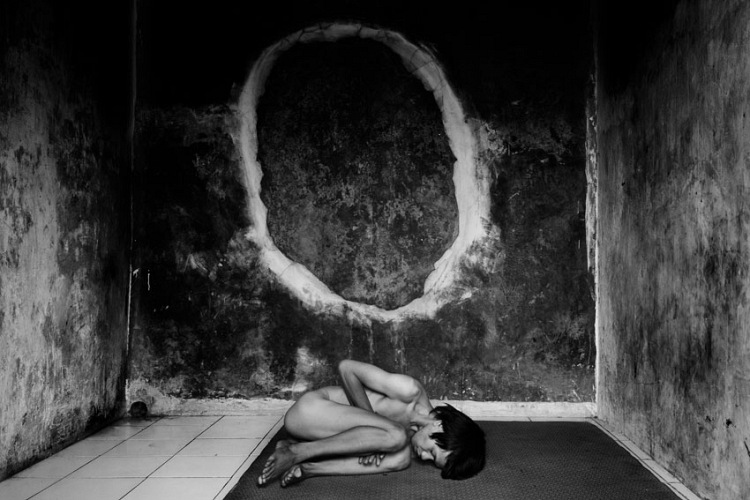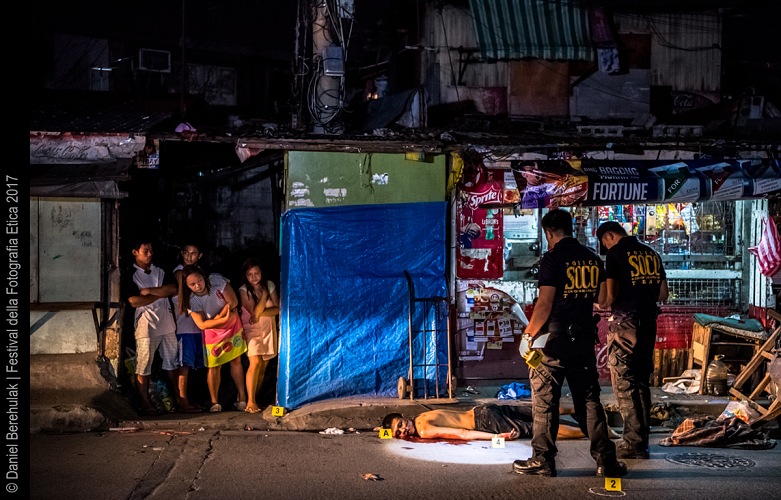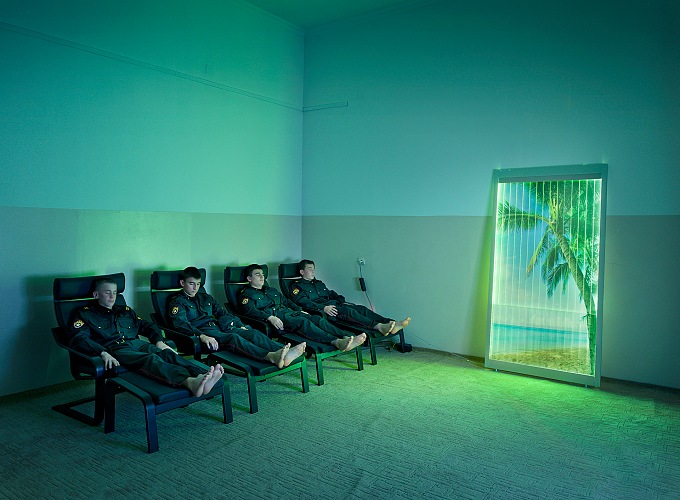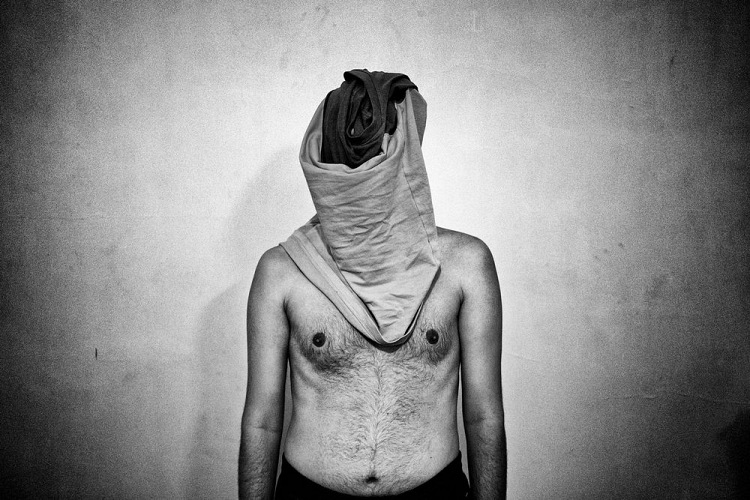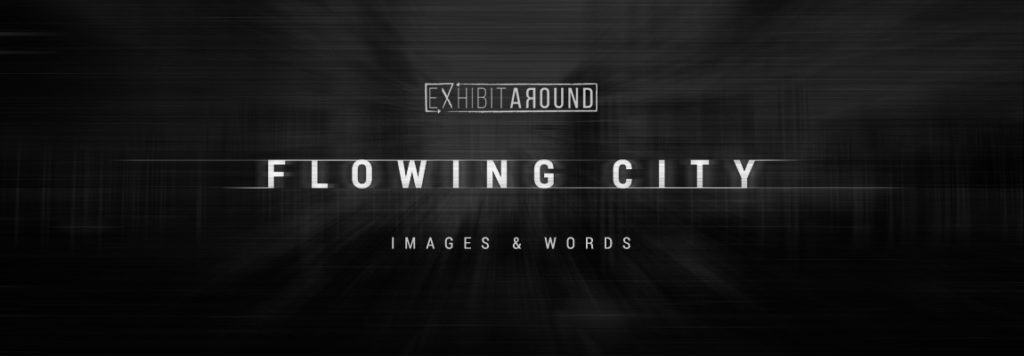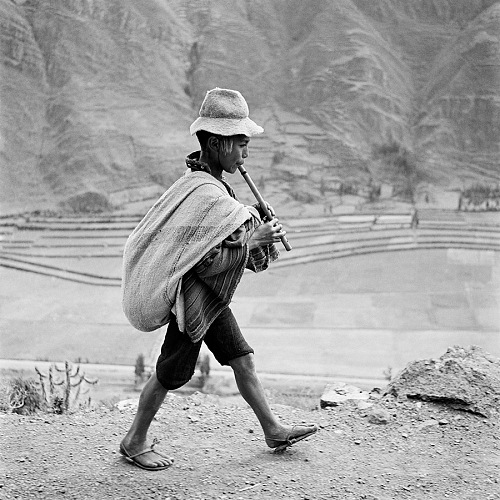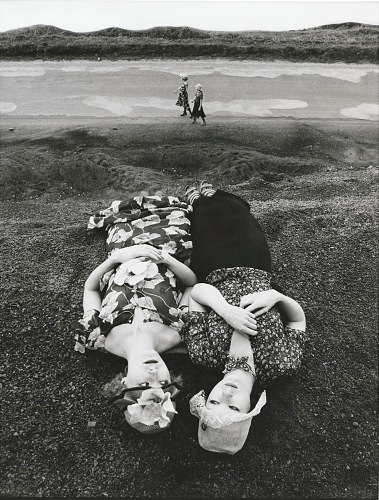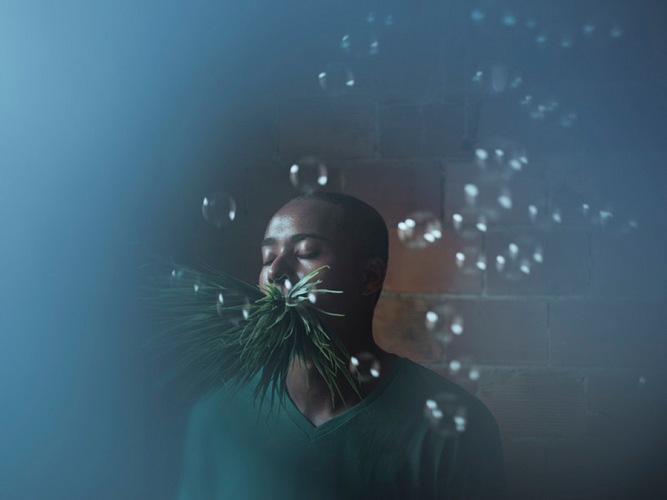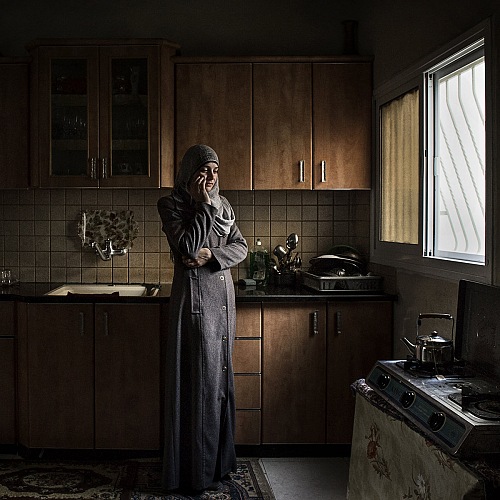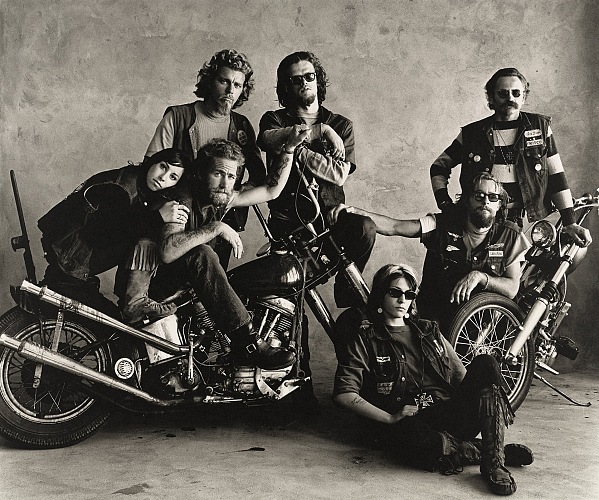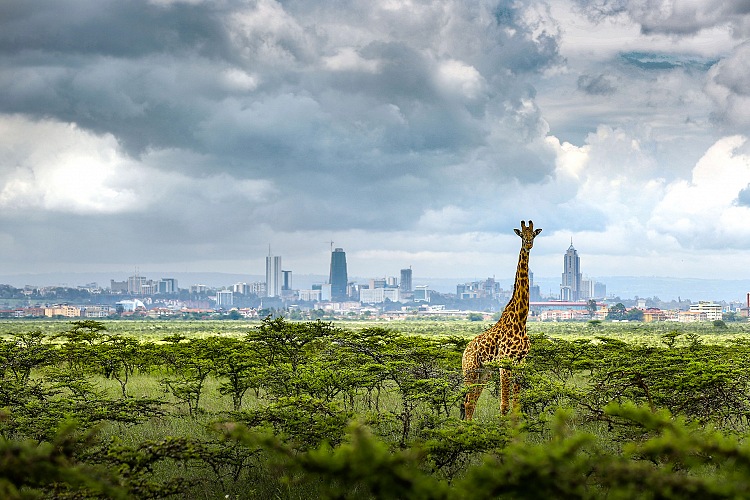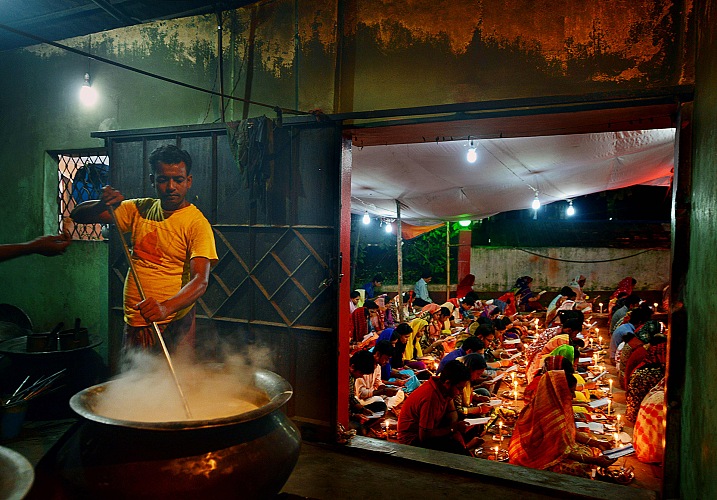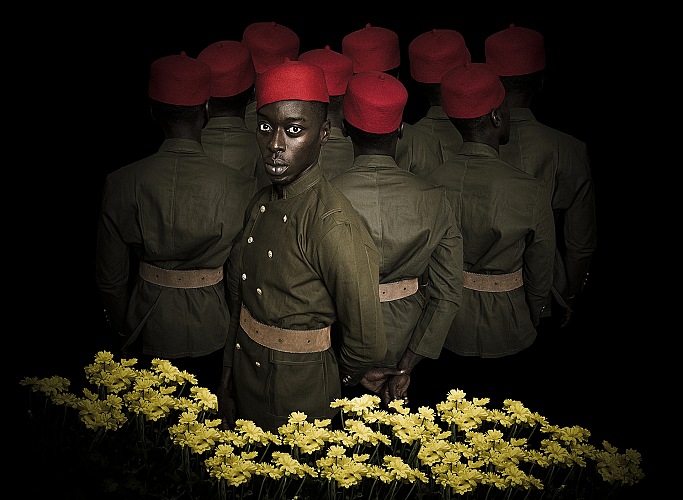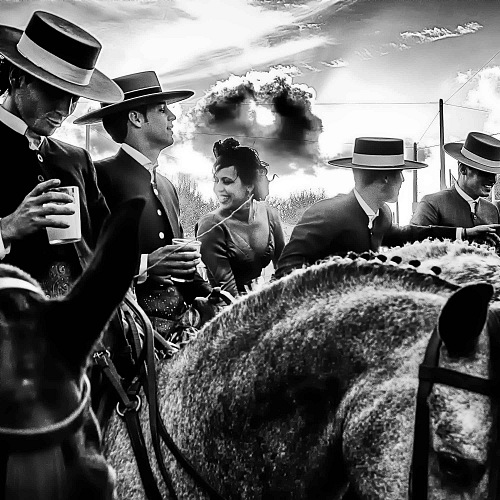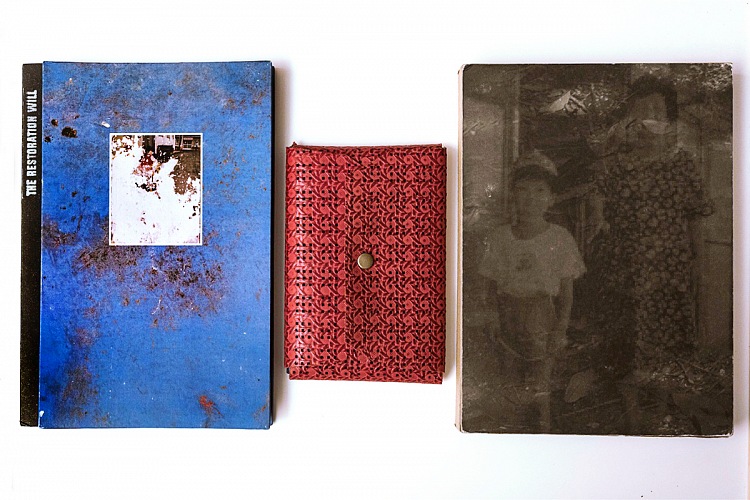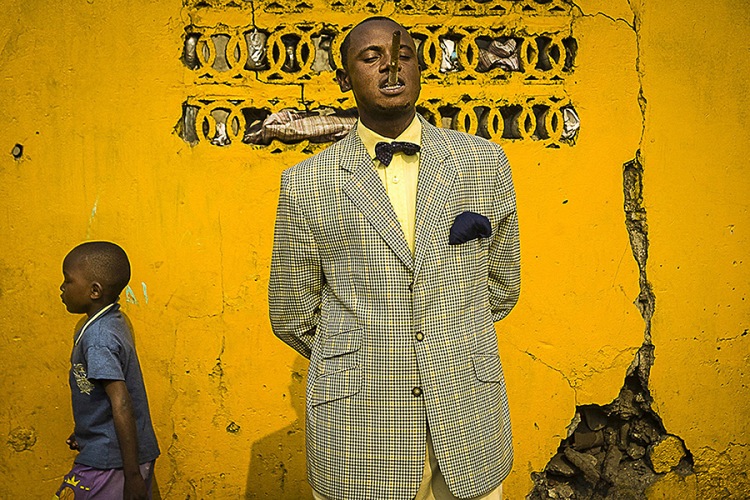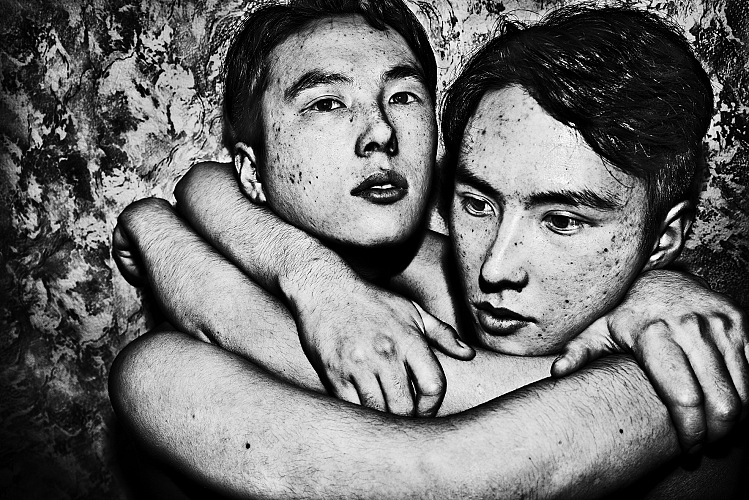The Ku Klux Klan
The exhibition The Ku Klux Klan by the photographer from the agency Magnum Photos Peter Van Agtmael, by its very title, is set to unleash apocalyptic images in the mind of the viewers who arrive in Lodi to visit the Thematic Area entitled The lives of the others and sponsored by Fujifilm Italia. In the imagination of those involved in some way in photography, the Ku Klux Klan is probably the one photographed by W. Eugene Smith in South Carolina in 1951: hooded individuals who meet secretly to set fire to crosses in the middle of the night. Powerful images which leave a trace in the memory of anyone who has seen them even once. These images which are sadly part of the history of the most powerful nation (or one of the most powerful) in the world.
The Ku Klux Klan (known for a short time also as Kuklux Klan) derives its name from the Greek κύκλος (kýklos, circle) joined at the end by Klan (social group with a common ancestor, family linked by strong bonds of solidarity) and, already in the name, it identifies the sense of superiority of belonging and exclusion of those who do not belong. Officially created on 24th December 1865 in Pulaski, Tennessee, at the end of the Civil War by Confederate veterans, the group on the one hand sought to bring help to the widows and children of Confederate soldiers who died during the war, the other was opposed to all actions taken by the federal government for an easing of racial segregation and especially the extension of voting rights to blacks. In 1869, the Confederate cavalry general Nathan Bedford Forrest asked, however, for the movement, which apparently had reached the considerable figure of 550,000 members, to dissolve as the increasing use of violence fell short of the principles for which it was established. Between 1870 and 1871 President Ulysses S. Grant signed the Klan Act and the Enforcement Act that made the Ku Klux Klan illegal.

Tennessee. USA, 2015. A cross lighting after the wedding of two members of the KKK. For the KKK, the cross symbolizes Jesus Christ lighting their path (though burning the cross is taboo in most sects of Christianity). Through the history of the KKK it has also often been burned on the property of African Americans in order to intimidate them. © Peter Van Agtmael/Magnum Photos.
In 1915 the Ku Klux Klan came back to life through William Joseph Simmons, who levered populist exploitation on the condition of the poorest white class convinced that their problems were caused by blacks, Jewish bankers and other minorities. The new organisation, created to make a profit, was able to exert much more influence on US politics, and marked the transition towards the Republican Party. Some factions of the Ku Klux Klan, like the infamous Black Legion, became protagonists of particularly violent incidents and murders against communist and socialist leaders who favoured the drop in popularity of the brotherhood until you arrive to its official dissolution in 1944.

Maryland. USA, 2015. A member of the KKK after a cross lighting/burning. © Peter Van Agtmael/Magnum Photos.
By the end of
World War II the name Ku Klux Klan had been borrowed many times to support the opposition to the Civil Rights Movement. These are still active factions, albeit isolated, scattered and divided. It is estimated that currently the members are not more than 5000 units, mostly belonging to the extreme right fringes. The principles that govern their work and I believe are the opposition to immigration, anti-Semitism and anti-Catholicism, the latter only partially moderated in recent decades and newly declared it in anti-papal form. Of course, the main racial component remains, which wants the superiority of whites over other races. «The Ku Klux Klan – it is written in the Creed read during initiation ceremonies – was created to regenerate our hapless country and to redeem the white race from the humiliating condition in which it has recently precipitated by the new republic. Our main and primary objective is to maintain the supremacy of the white race in this country. The history and physiology teach us that we belong to a race that nature has rewarded with a clear superiority over all other races, and that the Creator... intended to entrust a dominion over the inferior races... This our nation was founded by the white race and for the white race, and any attempt to transfer this control over the country in favour of inferior races like the blacks, clearly goes against God's will and in violation of the Constitution... the social equality must therefore be banished forever, because it represents a dangerous step towards political equality or, worse, towards mixed marriages and the production of a subspecies of bastards and degenerates…».
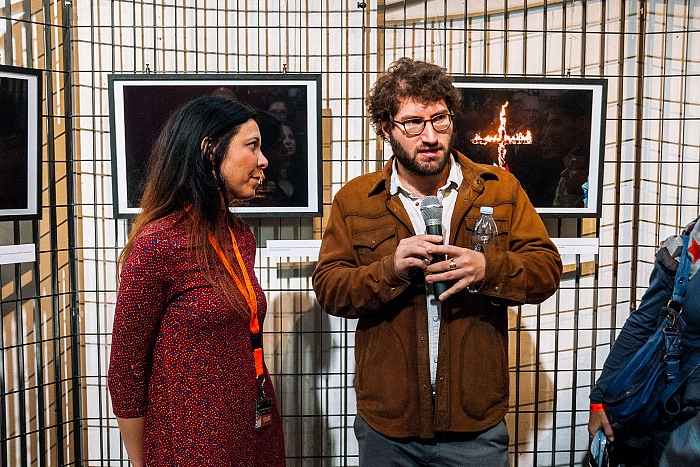
Peter Van Agtmael during the guided tour of his exhibition placed as part of the Thematic Space: The lives of the others at the former Church of St. Christopher in Lodi. Left Laura Covelli, head of the Educational Project of the Festival of Ethical Photography 2016. © Stefania Biamonti/FPmag.
As said at the beginning, those who go to see the exhibition probably expect to see an updated account of the atrocities of an organisation that in its history is stained with horrendous crimes. In fact
Van Agtmael tells us with his images of a group of subjects lacking in tools to interpret the current socio-political situation and probably with sociopathic tendencies. To make things improbable, even potentially dangerous, are the current members of the Ku Klux Klan whose details are reported by Van Agtmael, details that are separated from ridicule only for their infinite sadness. Just think of the story of the wedding in Tennesee: «When we arrived the bride and groom went for a wedding lunch at Arby’s, a fast food restaurant» or «The groom wore a white robe and the bride a shiny red one. They draped their dog, Leroy, in a little Klan robe. It was affixed with a patch that read White Power. The wedding took place in a barn in front of a small shrine. After the short ceremony, the gathering celebrated with a small supermarket cake, and proceeded to the large lawn to burn the cross».
The most interesting aspect of
Peter Van Agtmael's project is definitely recognizable in the fact that the work presented at Lodi does not pretend in any way to be exhaustive compared to the controversial phenomenon represented by the Ku Klux Klan, but inserts it as a tile within a mosaic giving a much broader understanding and representation of contemporary American society, as he himself reiterates in the video posted in the opening. [ Sandro Iovine ]
- - -
THE KU KLUX KLAN
by
Peter Van Agtmael
Former Church of St. Christopher, via Tito Fanfulla, 18 - Lodi (Italy)
8 – 30 October 2016
admission fee: 12,00 € (for all exhibitions)

Video interview with Peter Van Agtmael and the photo of the guided tour have been realised with equipment provided by Fujifilm Italia.
_ _ _
[ INTERNAL RESOURCES ]
◉
[ FPtag ] Festival of Ethical Photography 2016: the editorial staff point of view
◉
[ video ]
A project for schools: interview with Laura Covelli
◉
[ video ]
The confirmation of an ethics: interview with Alberto Prina
◉
[ events ]
Festival of Ethical Photography 2016
◉
[ contest ]
World.Report Award 2016: the winners
◉
[ contest ] World.Report Award 2016: finalists
◉
[ contest ] World.Report Award 2016: rules
◉ [ FPtag ] Festival of Ethical Photography 2015: the editorial staff point of view
[ EXTERNAL RESOURCES ]
◎
Peter Van Agtmael
◎
Festival of Ethical Photography
◎
Gruppo Fotografico Progetto Immagine
◎
Fujifilm Italia
published on 2016-10-19 in NEWS / EXHIBITIONS
FFE2016 FujifilmItalia SandroIovine MagnumPhotosmore in EXHIBITIONS
categories
EXHIBITIONS CONTEST WORKSHOP EVENTS MELTINGPOT BOOKS PORTFOLIO VIDEO ONGOING THEMATICPATHS YTOI OPINIONS FPART COVER READINGIMAGES SMARTFOLIO FPBLOG FPLAB
recent news
FPmag
editor in chief Sandro Iovine | sandro.iovine@fpmagazine.eu - senior writer Stefania Biamonti - web developer Salvatore Picciuto | info@myphotoportal.com - linguistic coordination Nicky Alexander - translations Nicky Alexander, Rachele Frosini - contributor Davide Bologna, Mimmo Cacciuni Angelone, Laura Marcolini, Stefano Panzeri, Pio Tarantini, Salvo Veneziano - local Lazio correspondent Dario Coletti local Sardinian correspondent Salvatore Ligios - local Sicilian correspondent Salvo Veneziano - editorial office via Spartaco, 36 20135 Milano MI | redazione@fpmagazine.eu - phone +39 02 49537170 - copyright © 2015 FPmag - FPmag is a pubblication of Machia Press Publishing srl a socio unico, via Cristoforo Gluck, 3 20135 Milano MI - VAT no. 07535000967 C.F. (TAX code) 07535000967 - Copyright © 2015 FPmag - Registered at Tribunale di Milano No. 281 on the 9th September 2014
